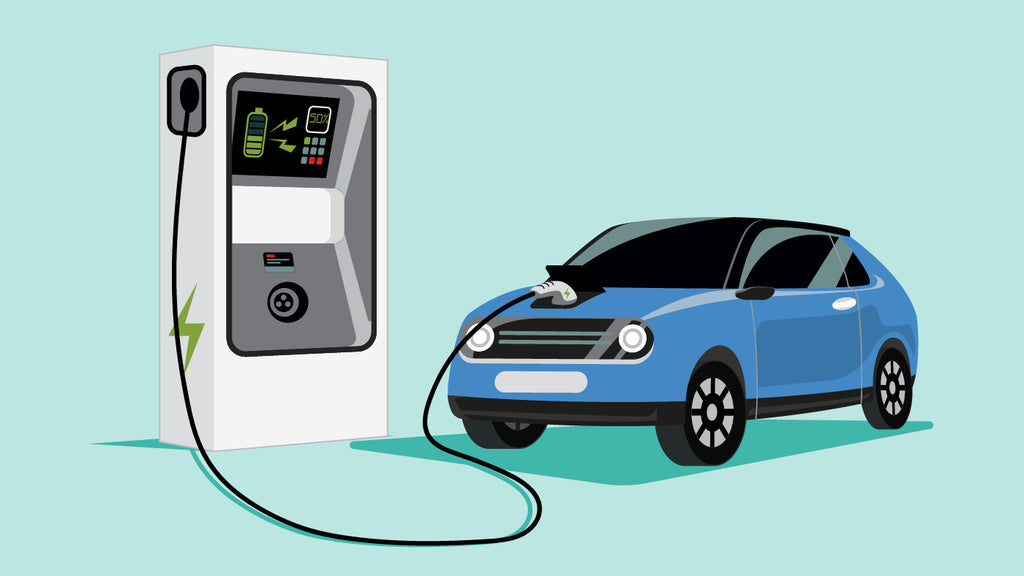Exploring the Anatomy of Electric Vehicles: Key Components and Their Functions
Posted by MYCAR TEAM

Electric vehicles (EVs) have gained significant popularity in recent years as a cleaner and more sustainable alternative to traditional internal combustion engine vehicles. But have you ever wondered what makes an electric vehicle tick? In this blog post, we'll dive into the various components that come together to power and propel electric vehicles.
The Heart of the Matter: The Electric Motor
At the core of every electric vehicle lies the electric motor, which is responsible for converting electrical energy into mechanical energy. EVs can have one or more electric motors, and they come in various types, including:
-
Brushless DC Motors (BLDC): These are commonly used in EVs due to their efficiency and durability. BLDC motors use magnets to produce motion without brushes, reducing maintenance needs.
-
Induction Motors: Some EVs use induction motors, which don't rely on permanent magnets but instead use electromagnetic fields to generate motion.
-
Permanent Magnet Synchronous Motors (PMSM): These motors combine the advantages of both BLDC and induction motors and are known for their high efficiency.
The Power Source: Batteries
One of the defining features of electric vehicles is their reliance on batteries to store electrical energy. Lithium-ion batteries are the most common type used in EVs due to their energy density and rechargeability. These batteries are typically composed of multiple cells that work together to provide the necessary power.
Charging System
To keep an electric vehicle running, you'll need a charging system. This includes:
-
Onboard Charger: Converts alternating current (AC) from the charging station into direct current (DC) to charge the vehicle's battery.
-
Charging Port: Where you plug in the charging cable, which connects to the charging station.
-
Charging Infrastructure: This includes public charging stations and home charging units. EV owners can choose from various levels of charging, including Level 1 (standard household outlets), Level 2 (240-volt charging stations), and Level 3 (DC fast chargers).
Power Electronics
Power electronics play a crucial role in controlling the flow of electricity within an electric vehicle. They include components such as:
-
Inverters: These devices convert DC power from the battery into AC power for the electric motor.
-
DC-DC Converters: They regulate voltage levels within the vehicle, ensuring that various components receive the right amount of power.
Thermal Management System
Electric vehicles generate heat during operation, especially in the battery and electric motor. A thermal management system is essential to regulate and dissipate this heat, ensuring that components stay within their optimal operating temperatures.
Regenerative Braking
EVs often feature regenerative braking systems that capture and store energy during braking, converting it back into electricity to recharge the battery. This improves energy efficiency and extends the vehicle's range.
Transmission and Drivetrain
Unlike traditional vehicles with complex transmissions, many EVs use a single-speed transmission or have no transmission at all. This simplifies the drivetrain and enhances efficiency.
Control Systems and Software
Modern electric vehicles rely heavily on advanced control systems and software to manage various functions, including battery management, power distribution, and regenerative braking. These systems are crucial for optimizing performance and efficiency.
Conclusion
Electric vehicles are a marvel of modern engineering, with multiple components working in harmony to provide a clean and efficient mode of transportation. Understanding these key parts can give you a deeper appreciation for the technology behind electric vehicles and their role in shaping a sustainable future for transportation.
As the electric vehicle industry continues to evolve, we can expect further innovations and improvements in these components, making EVs even more accessible and appealing to consumers.

